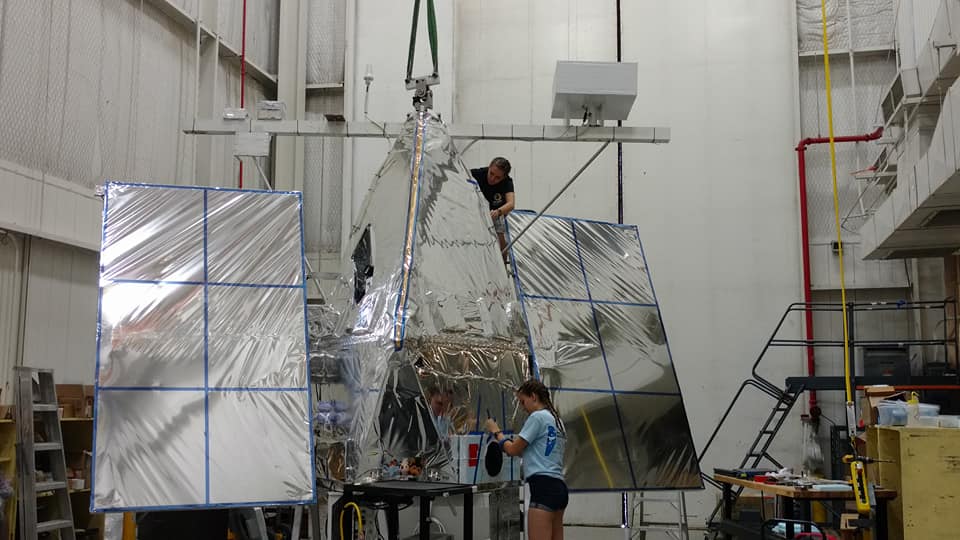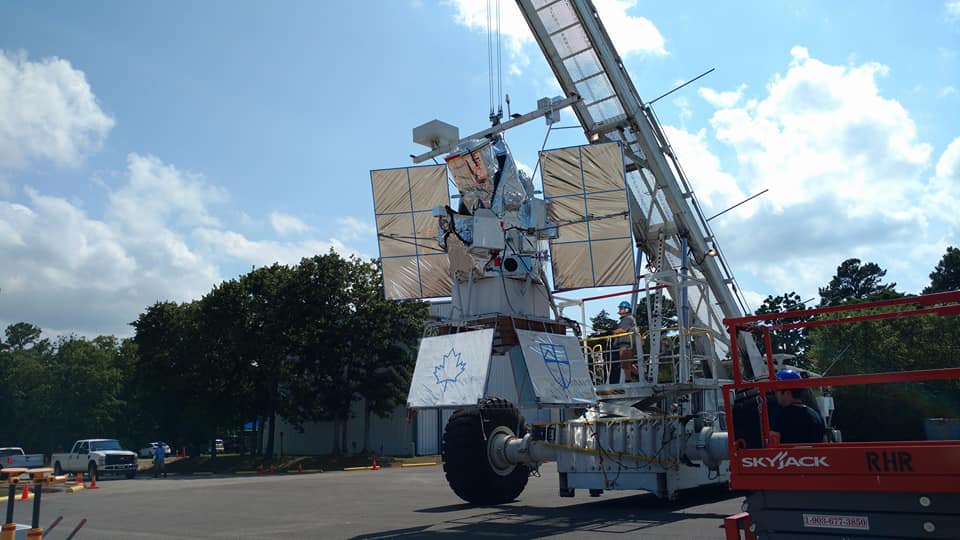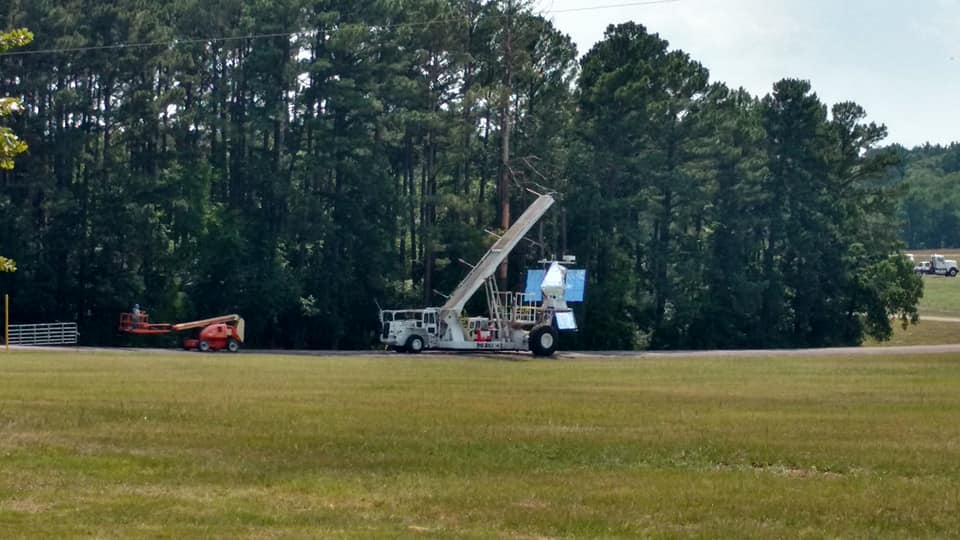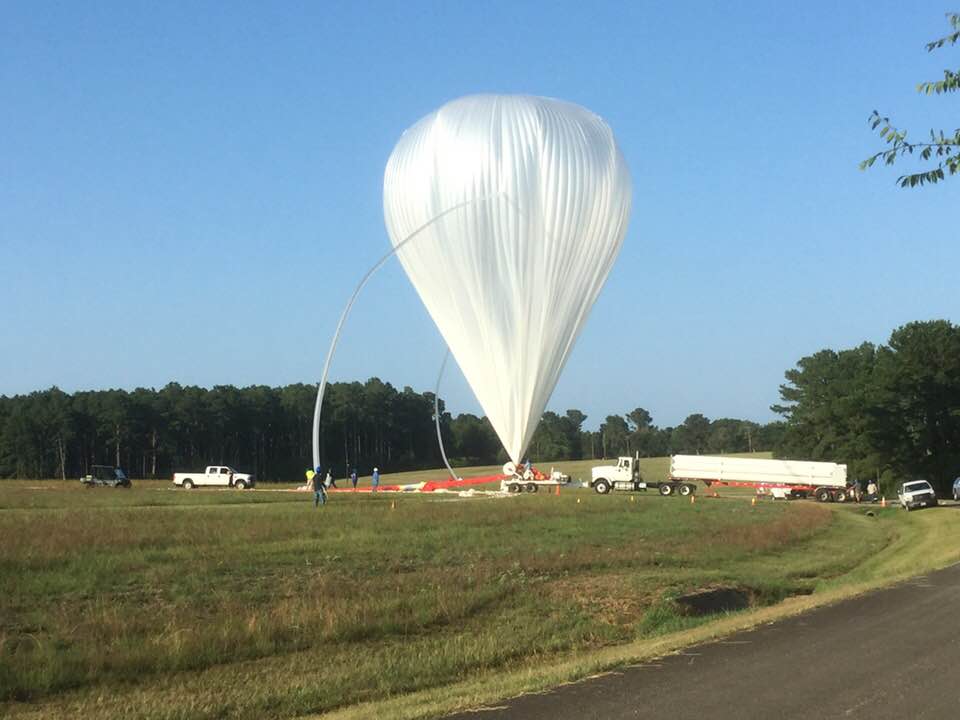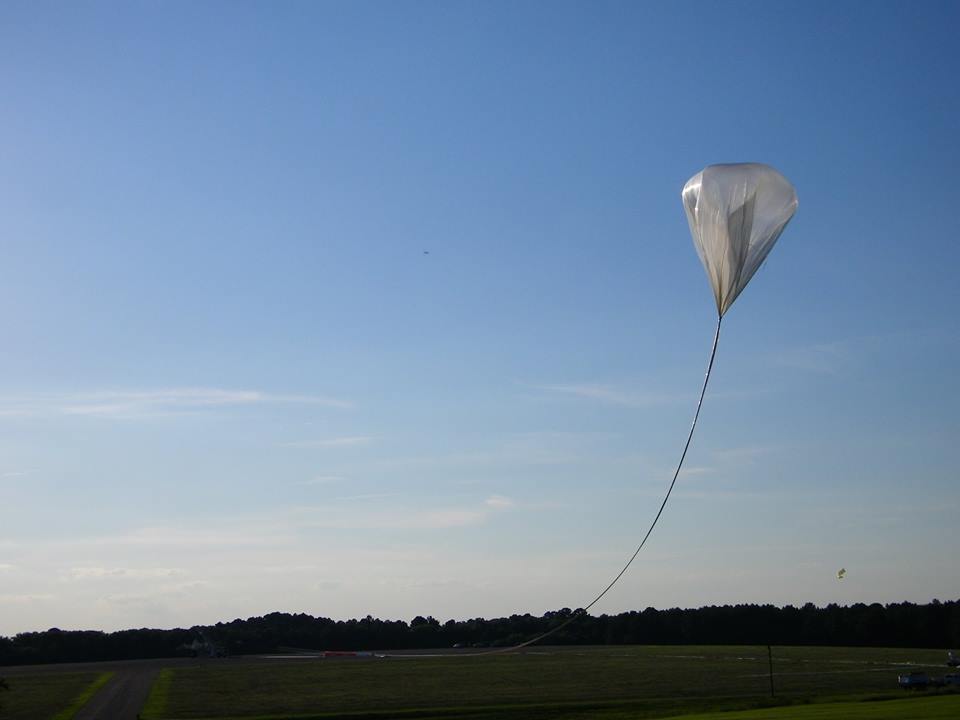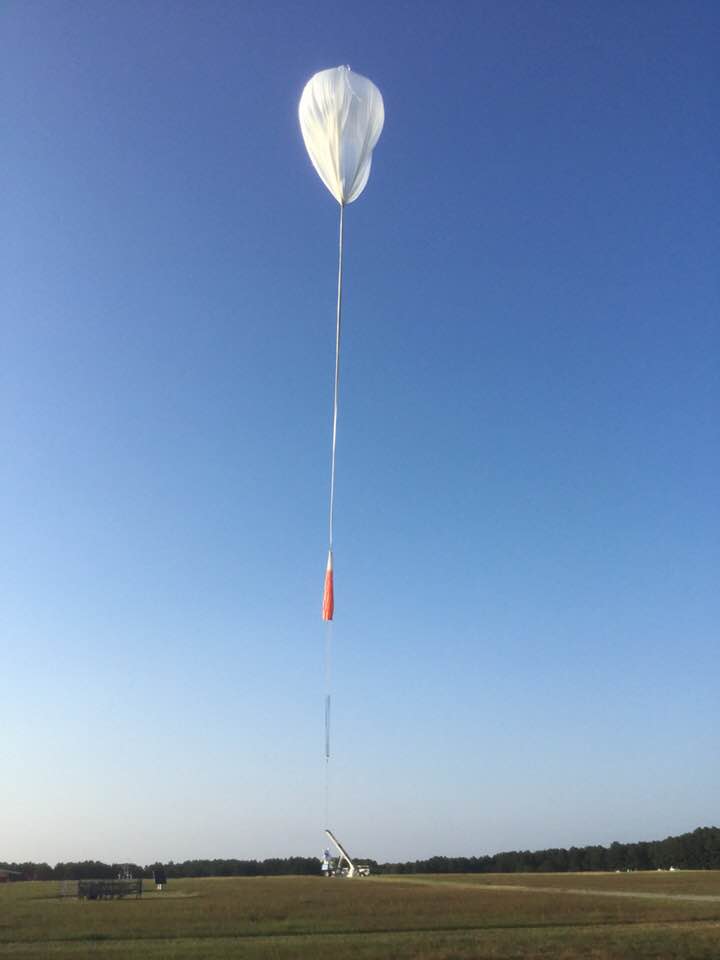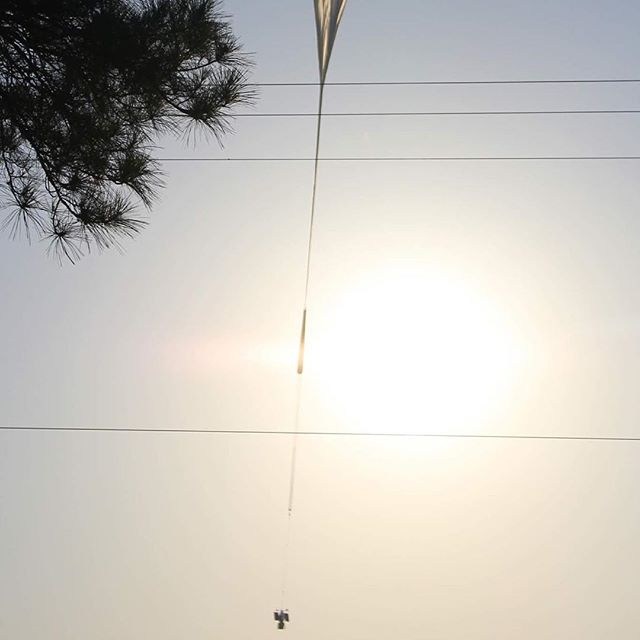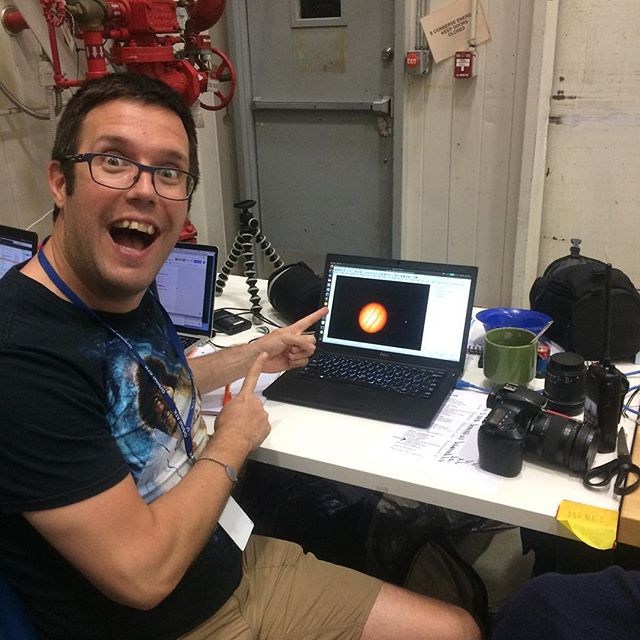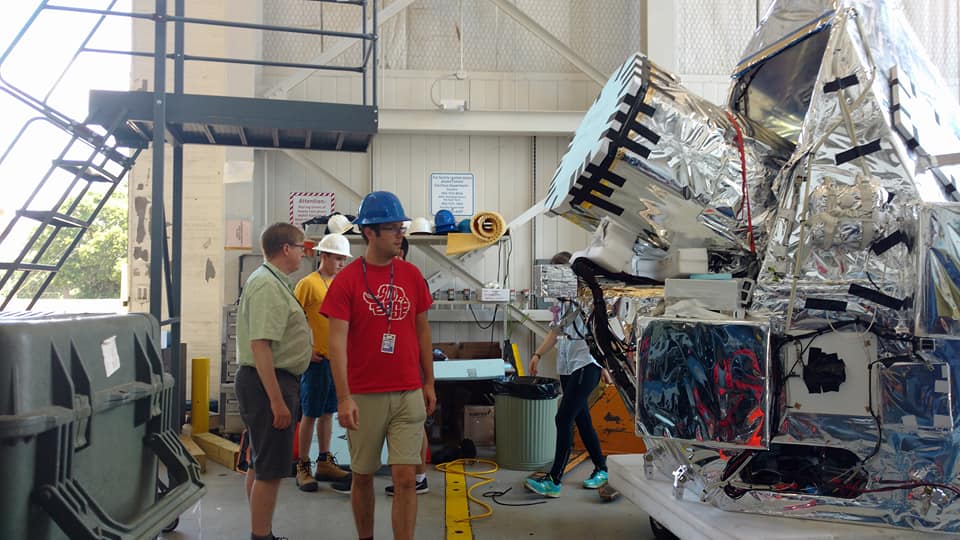-
June 10 2018
SuperBIT flight or the dream of any balloon scientist
Palestine, Texas.- Launched at first try, undisturbed flight at altitude by hours, an instrument working as expected, and then landing it with minor damage in an unpopulated zone but with a nearby road for an easy recovery. All this is what I call a picture perfect balloon mission.
In the previous paragraph I am not referring to some ideal scenario taken from a training manual of any agency's balloon program, but what happened from beginning to end with the SuperBIT telescope flight launched a few days ago from Palestine, Texas by the Columbia Scientific Balloon Facility.
What is SuperBIT?. The acronym stands for Balloon-borne Imaging Telescope, with the "Super" added to reaffirm the plans to fly it in a long duration mission under a NASA superpressure balloon in the near future. The telescope is being developed by the University of Toronto, Canada, with the collaboration of the University of Princeton and the Jet Propulsion Laboratory from the United States and the Durham University from England. A unique feature of the instrument is that it operates in the visible-to-near-UV bands of the spectrum, which is very unusual for the kind of telescopes that we are used to find in balloon-borne missions usually operating in the Infrared, Gamma or Submilimeter domains. The last balloon-borne instrument that operated in the visible was the infamous and gargantuan Stratoscope-II which flew a dozen of times in the 60's and early 70's.
The scientific goals of SuperBIT will be diverse: from mapping the distribution of dark matter around hundreds of galaxy clusters to perform solar planet spectroscopy or studies of exoplanets.
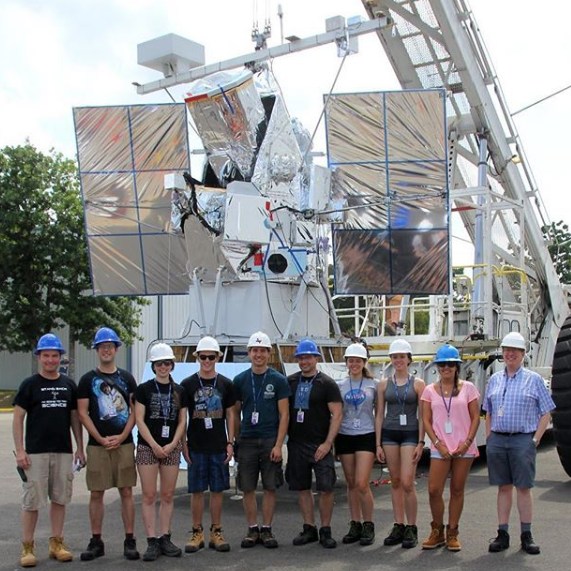
A little bit of history
An earlier version of the telescope known simply as BIT (Balloon Imaging Telescope) was successfully launched by the French space agency CNES from the Timmins Stratospheric Balloon Base, in Ontario, Canada on September 18, 2015 hanging under a 400,000 m3 Airstar balloon. During the 12 hours of flight it achieved a pristine view of space, with pointing stability equivalent to the resolution of the Hubble Space Telescope. Finally it landed on the bank of a remote river in northern Quebec, and was recovered with minimal damage.
A second more advanced version of the instrument was launched from NASA's Palestine base on June 30, 2016. Althought the telescope experienced -as expected in any engineering mission- some problems in flight (software, mechanical and optical issues) it managed to obtain outstanding images. However, after the mission ended, the recovery party reached the landing site to find that the telescope optics were destroyed due to the secondary mirror and baffle fell over the primary.
In the meantime between these two first flights, the instrument had been accepted for a three month flight on the NASA Superpressure balloon (SPB) to be launched from Wanaka originally on this 2018. However, these plans were altered after the failure of the SPB mission carrying the EUSO-SPB (Extreme Universe Space Observatory) which sank on the Pacific Ocean in early May 2017. This issue made NASA to move two years ahead the planned long duration flight, which is now set for 2020.
The team went again to the Texas base in the summer of 2017, ready to perform their third flight when a unexpected accident changed their plans: BETTII, a payload launched in June 9 suffered an uncontrolled freefall from the stratosphere and was destroyed. NASA halted the rest of the campaign for almost one month while investigated the mishap, but when operations were resumed, weather was not cooperative enough during the remainder of the summer launch window to allow a flight. The mission was shifted from Palestine to Fort Sumner adding it to the fall campaign that year, but also the weather had the last word: that season, of the seven payloads waiting to be launched only two were flown before campaign's end. As a result, the third SuperBIT flight was moved again to Palestine for the next summer launch campaign.
A picture perfect flight
As I've mentioned at the beginning of this chronicle, the third balloon mission for SuperBIT was by far much more straightforward than the previous ones. After the arrival of the team in early May, the integration process of the instrument progressed at good pace during the remainder of the month and by May 29 it was completed. On june 1st was performed the compability test and hence, the telescope was declared ready to flight with the first launch opportunity set for June 4. That chance was scrubbed early -before picking-up SuperBIT from the high bay building- due to the safety risk implicit in the fact that forecast showed that the balloon will overflight the town of Palestine during the initial part of the ascent. Althought the casting shadow of the tortuous weeks of waiting during the previous campaigns appeared in the horizon, this time the weather would be much more cooperative.
Next day, the launch operation progressed well during the afternoon. The telescope was picked up by the "Big Bill" launch vehicle (the same used in the Fort Sumner campaigns which replaces the old and retired "Tiny Tim") and was transported to the circular launch area where at 18:00 the balloon was laid out and 40 minutes later the filling process was started. The inflation was completed by 19:05 and ten minutes later the balloon was released and SuperBIT -nomenclated as mission 1559P- was finally on its way to the stratosphere.
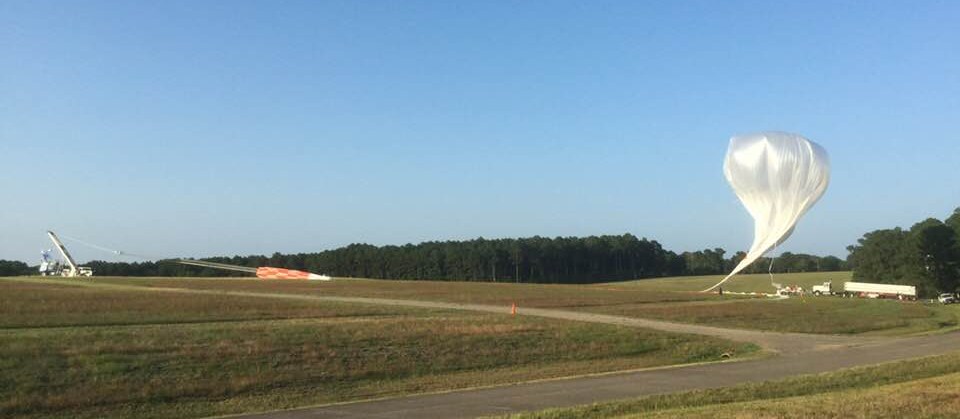
The balloon moved first to the southwest and two and a half hours into the flight it reached float altitude about 110.000 ft shifting course to the westerly-ward flight path that would maintain until the end. By messages in social media we learned that many people of nearby towns saw it shining after sunset in the clear Texas night.
The flight progressed very well overnight, with the team controling closely the behaviour of the instrument which appeared to work flawlessly. By sunrise, with the scientific portion of the flight already completed, the balloon continued it's trip flying over central Texas while the staff of the Columbia Scientific Balloon Facility searched for a suitable place to make it land. As Superbit was floating over towns and mountains, a decision had to be taken: to make it land over rough terrain or possible military land or wait another 10 hours till it could float west to an easier place to recover it. One thing to consider was the damage that the instrument could suffer in rough terrain or how long will be the sun exposure that it could receive which could affect the optical system of the equipment.
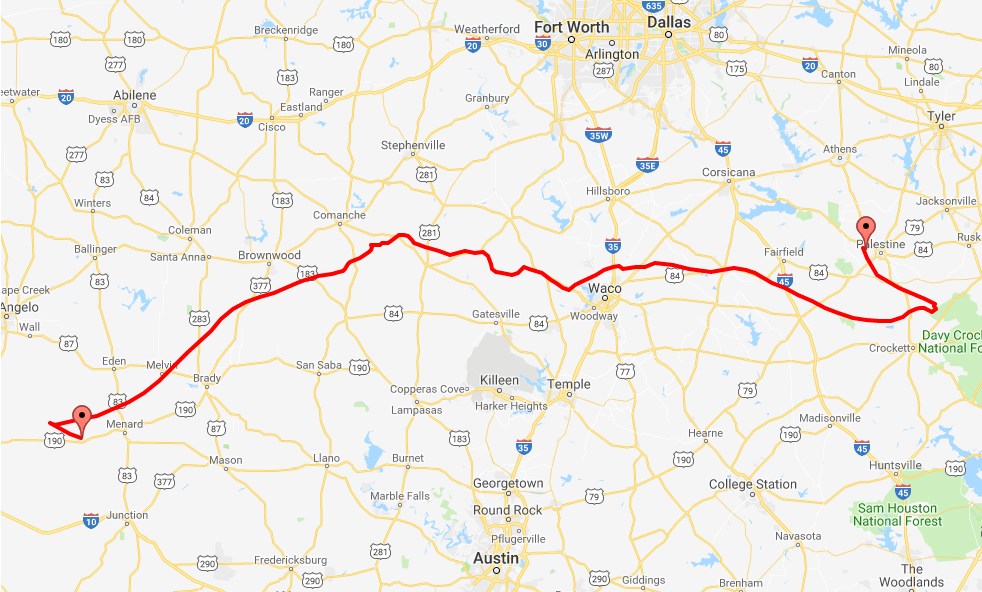
Finally, the flight was terminated at 15:40 on June 6, with the payload landing 45 minutes later in an unpopulated zone of the Tom Green County, 37 nautic miles southeast of San Angelo, Central Texas. Total flight time was over 20 hours.
To complete a chronicle of an almost picture perfect flight, when the recovery team reached the landing zone, they found that the instrument was in good shape with only some damage to the external structure and the "fake" solar panels which were included merely to simulate as close as possible the mechanical configuration of a future long duration mission.
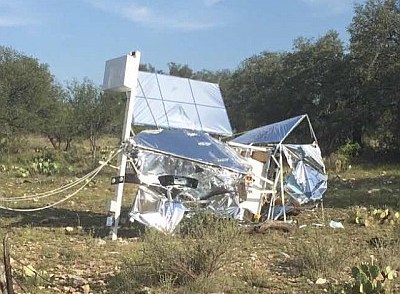
No doubt, the entire development of the mission was a dreamed flight for any balloon scientist. Next day the payload was returned to the launch base and started the disassembling process for the return to Canada. In the months ahead I will be informing from this same pages what the scientific outcome of the flight was.
Back to the campaign, I've learned a few hours ago that PIPER (Primordial Inflation Polarization Explorer), one of the payloads that was to be launched during this campaign finally was dropped from the schedule and will not be flown this season from Palestine. It will be part as planned of the Fort Sumner fall campaign starting this August.
This left us with only one mission to be launched during the campaign: ASCOT (Advanced Scintillator Compton Telescope) developed by the Space Science Center of the University of New Hampshire, which also will count with a "piggy back" passenger onboard from Ireland: a gamma ray detector called GMoDem.
As allways ... stay Tuned !
Great part of this chronicle was assembled from different posts by Susan Netterfield on his facebook account, the Instagram of the project and the fantastic pictures shared by Ross Hays also in Facebook. I'm in debt to all them.
-
Share this on social media

